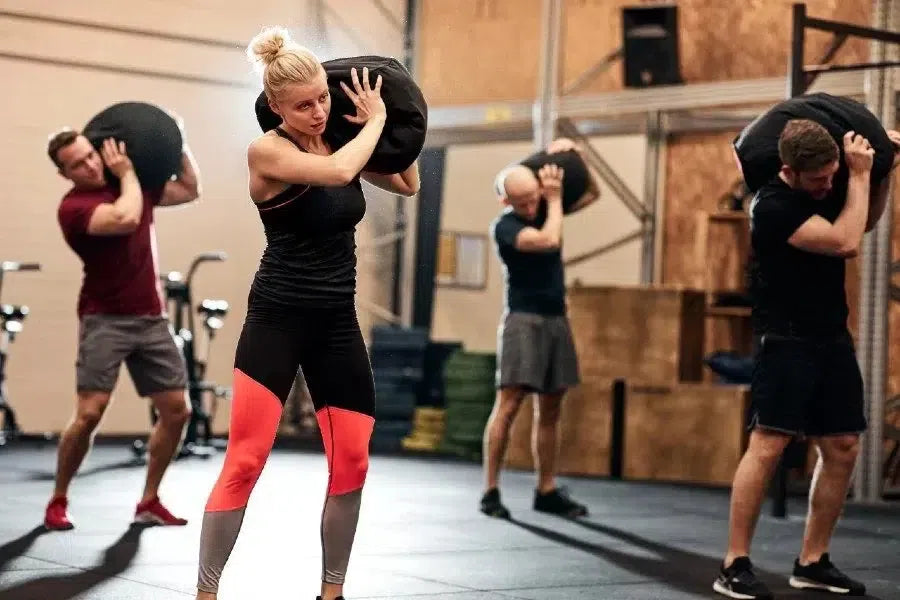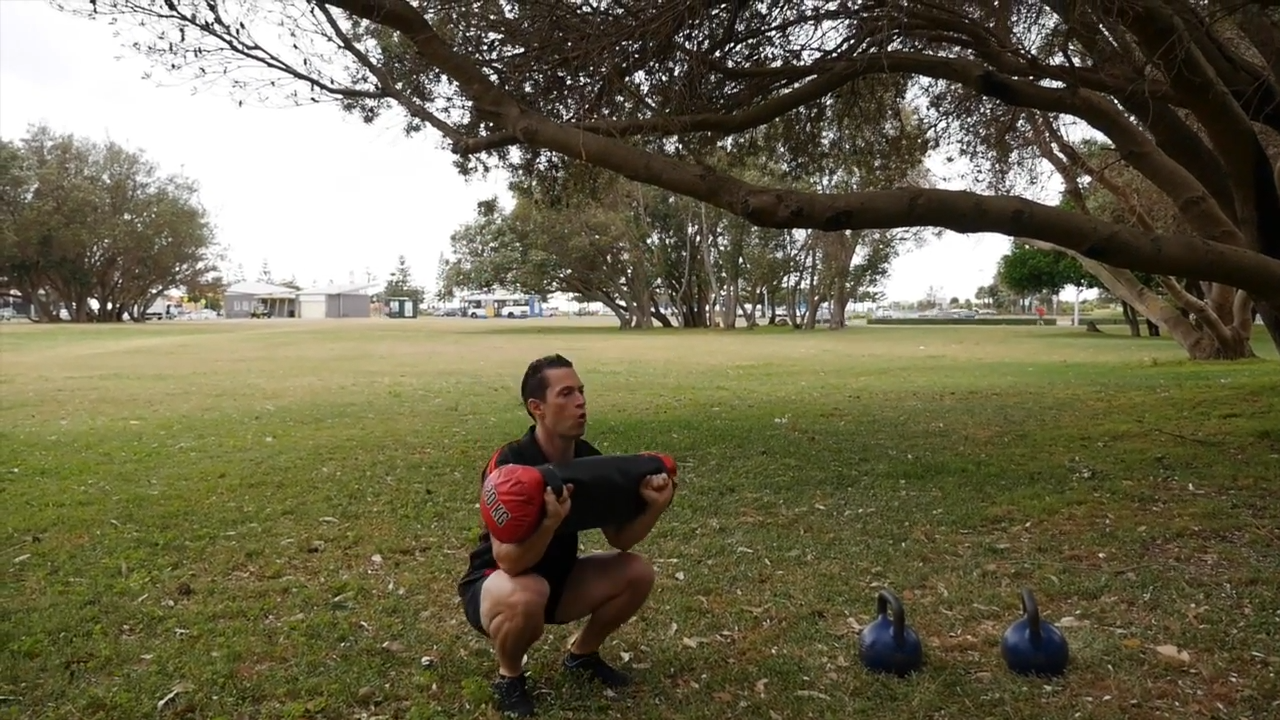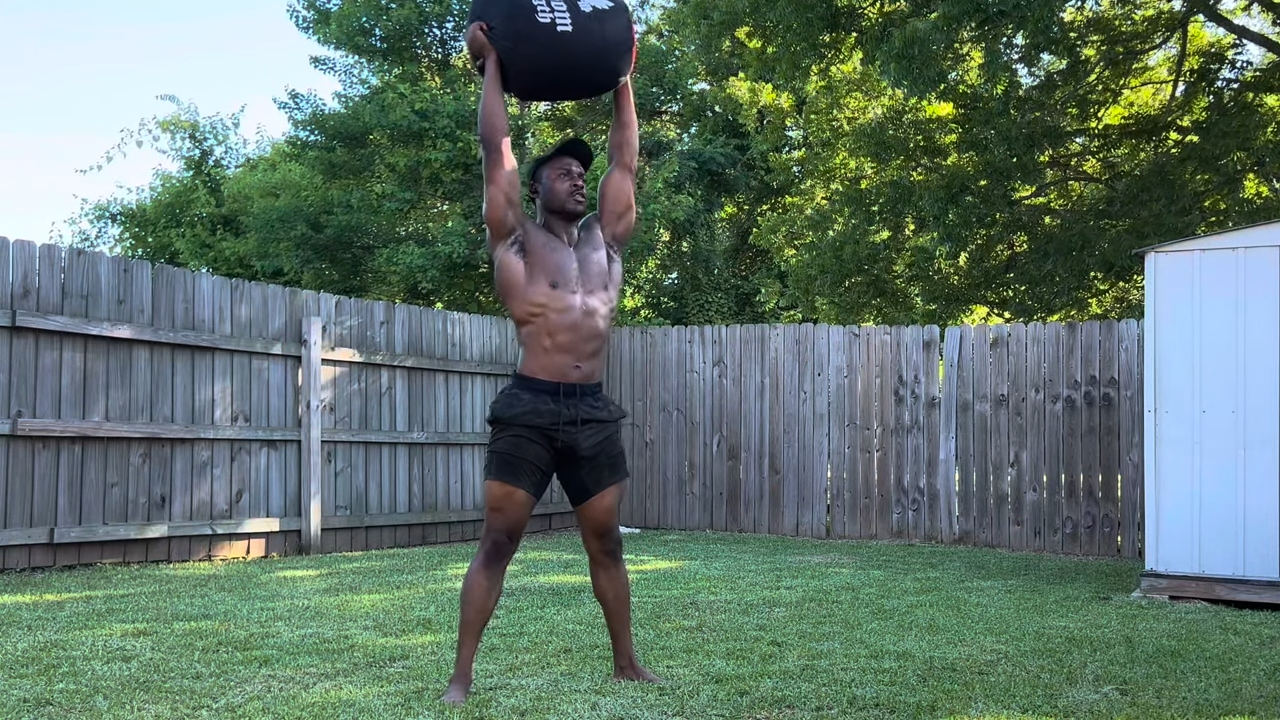
Sculpt and Strengthen: Best Exercises With a Sandbag for a Total Body Burn
Share
Table of Contents
- Why Sandbag Workouts Are a Game-Changer
- Benefits of Sandbag Training
- Choosing the Right Sandbag
- The Best Sandbag Exercises for Strength and Conditioning
- Proper Form and Technique
- Common Errors to Watch Out For
- FAQs About Sandbag Workouts
- Final Thoughts: Add Sandbags to Your Routine!
Why Sandbag Workouts Are a Game-Changer
If you’re looking for a workout that challenges your strength, endurance, and core stability all at once, sandbag training is the way to go. Unlike traditional weights, a sandbag’s shifting weight forces your muscles to work harder, making every movement more effective.
A certified personal trainer can provide expert advice on sandbag workouts, ensuring you learn proper techniques for safe exercise. This workout tool is perfect for building functional strength—just like in real life, where you don’t always lift perfectly balanced objects. Plus, sandbags are easy to use at home, in the gym, or even outdoors.
In this guide, we’ll explore the best sandbag exercises that deliver a total-body burn, helping you sculpt muscle, improve endurance, and torch calories.
Benefits of Sandbag Training
Sandbag training offers a multitude of benefits that can elevate your fitness routine. One of the standout advantages is its ability to engage your core muscles, which are crucial for maintaining stability and balance during various movements. By incorporating sandbag exercises, you can significantly enhance your functional strength, making everyday tasks easier and more efficient.
Another key benefit is the way sandbag workouts recruit multiple muscle groups quickly and effectively. This makes them an excellent choice for building overall full-body strength. Plus, sandbag training is highly adaptable, allowing you to modify exercises to suit your fitness level. Whether you’re new to weight training or seeking a low-impact workout, sandbag exercises can be tailored to meet your needs.
Choosing the Right Sandbag
Selecting the right sandbag is crucial for maximizing your workout benefits. Start by considering the weight of the sandbag. Sandbags come in various weights, typically ranging from 5kg to 100kg+. Choose a weight that matches your current fitness level and allows you to perform exercises with proper form.
Next, think about the material of the sandbag. Options include nylon, polyester, and canvas. Look for a durable material that can withstand regular use and the rigours of your workout routine.
Handles are another important factor. Our sandbags feature multiple handles, which can make certain exercises easier to perform. Ensure the handles are comfortable and sturdy, allowing you to grip the sandbag securely during your workouts.
The Best Sandbag Exercises for Strength and Conditioning
1. Lunge with Rotation
A killer lower-body and core movement, this exercise helps with balance and rotational strength.
Muscles Worked: Glutes, core, quads, obliques
Reps: 10-12 per side
How to do it:
- Hold the sandbag by its handles at chest height.
- Step back into a lunge, keeping your front knee over your toes and your back knee close to the ground.
- Position one foot forward while lowering into the lunge.
- Rotate the sandbag toward your front leg while keeping your core tight and ensuring your left knee stays aligned with your toes.
- Return to the starting position and switch sides.
👉 Tip: Move slowly and control the rotation to avoid straining your back.
Sandbag Zercher Squat Position
A full-body powerhouse move that builds leg, core, and back strength.
Muscles Worked: Quads, glutes, core, hamstrings, lower back
Reps: 12-15
How to do it:
- Hold the sandbag in the crook of your elbows at chest height.
- Stand with feet shoulder-width apart.
- Lower into a deep squat while maintaining a proper squat position and keeping your chest up.
- Push through your heels to return to standing.
👉 Tip: If you’re struggling with balance, widen your stance slightly.

3. Reverse Lunge with Slider
This advanced lunge variation adds instability, making your glutes, hamstrings, and core work harder.
Muscles Worked: Glutes, hamstrings, core
Reps: 10 per leg
How to do it:
- Place a slider under one foot and hold the sandbag on one shoulder.
- Slide your right foot back while bending your front knee.
- Keep your chest up and core engaged.
- Drive through the front heel to return to standing.
👉 Tip: Beginners can try this move without a slider for better control.
Upper Body Bent-Over Row with Sandbag
This exercise strengthens your back, shoulders, and arms, improving posture and pulling power.
Muscles Worked: Upper back, lats, rear delts, biceps
Reps: 12-15
How to do it:
- Hold the sandbag by the handles, feet hip-width apart.
- Hinge at your hips, keeping your back flat.
- Pull the sandbag toward your chest, squeezing your shoulder blades together.
- Slowly lower it and repeat.
👉 Tip: Keep your core tight to avoid rounding your back.
5. Anti-Rotational Plank Pulls
This advanced core stability move challenges your entire midsection and shoulders.
Muscles Worked: Core, shoulders, obliques
Reps: 8-10 per side
How to do it:
- Start in a high plank with the sandbag beside you.
- Reach under your body to perform a sandbag pull, pulling the sandbag across to the other side.
- Avoid twisting your hips—keep them level.
- Repeat on the other side.
👉 Tip: To make it easier, widen your stance or perform the move on your knees.
6. Sandbag Halos
A fantastic move for shoulder mobility and core engagement.
Muscles Worked: Shoulders, core, traps
Reps: 10 in each direction
How to do it:
- Hold the sandbag with both hands in front of you.
- Use your left arm to help move it in a circular motion around your head.
- Keep your core braced and move slowly.
- Switch directions after several reps.
👉 Tip: Start light and focus on controlled movement to prevent strain.
7. Sandbag Bear Hug Squat
This squat variation makes it easier to keep your chest up and engage your core.
Muscles Worked: Quads, glutes, core
Reps: 12-15
How to do it:
- Hug the sandbag tightly to your chest.
- Squat down as low as possible, keeping your chest upright and knees bent.
- Drive through your heels to return to standing.
👉 Tip: Squeeze the bag tightly to engage your upper body.
8. Sandbag Burpee to Snatch
A high-intensity move that torches calories and builds full-body power.
Muscles Worked: Full body (legs, core, shoulders, arms)
Reps: 8-10
How to do it:
- Start in a press-up position before performing the burpee.
- Perform a burpee while gripping the sandbag handles.
- As you stand up, snatch the sandbag overhead in one motion.
- Lower it back to the ground and repeat.
👉 Tip: Use explosive power from your legs and hips to lift the bag.
Proper Form and Technique
Maintaining proper form and technique is essential for getting the most out of your sandbag training while minimizing the risk of injury. Here are some key tips to keep in mind:
- Always start in a standing position with your feet shoulder-width apart.
- Keep your knees slightly bent and distribute your weight evenly on both feet.
- Engage your core muscles by drawing your belly button towards your spine.
- Keep your back straight and your shoulder blades down and away from your ears.
- Use slow and controlled movements when performing exercises.
- Avoid jerking or bouncing the sandbag, as this can put unnecessary strain on your muscles and joints.
By following these guidelines, you can ensure that your sandbag workouts are both effective and safe.

Common Errors to Watch Out For
When performing sandbag exercises, it’s important to be aware of common errors that can compromise your form and increase the risk of injury. Here are some mistakes to watch out for:
- Letting the sandbag swing or bounce, which can strain your muscles and joints.
- Failing to engage your core muscles, leading to poor form and potential injury.
- Not keeping your back straight, which can put unnecessary strain on your spine.
- Using fast, uncontrolled movements, which can result in jerking or bouncing the sandbag.
- Not keeping your knees slightly bent, which can place undue stress on your joints.
By avoiding these common errors, you can perform sandbag exercises more effectively and safely, ensuring you get the most out of your workouts.
FAQs About Sandbag Workouts
1. Are sandbag exercises worth it?
Yes! Sandbag exercises engage multiple muscle groups, improve functional strength, and enhance core stability.
2. How much weight should I use?
Beginners should start with low weights. Perfecting form is key before moving onto heavier weights.
Speak to a certified personal trainer to help with your form.
3. Can I replace traditional weights with a sandbag?
Absolutely! Sandbags provide a more dynamic challenge than dumbbells or barbells due to their shifting weight.
4. How often should I do sandbag workouts?
Aim for 2-4 sessions per week, depending on your fitness goals and recovery time.
5. Do I need a gym to train with sandbags?
No! Sandbags are versatile and space-saving, making them perfect for home, garage, or even outside workouts and bootcamps.
Final Thoughts: Add Sandbags to Your Routine!
Sandbag training is a fun, effective, and challenging way to build strength, improve endurance, and develop real-world functional fitness. Whether you're a beginner or a seasoned lifter, adding sandbag exercises to your routine can take your workouts to the next level.
Give these sandbag exercises a try and experience the total-body burn for yourself!
